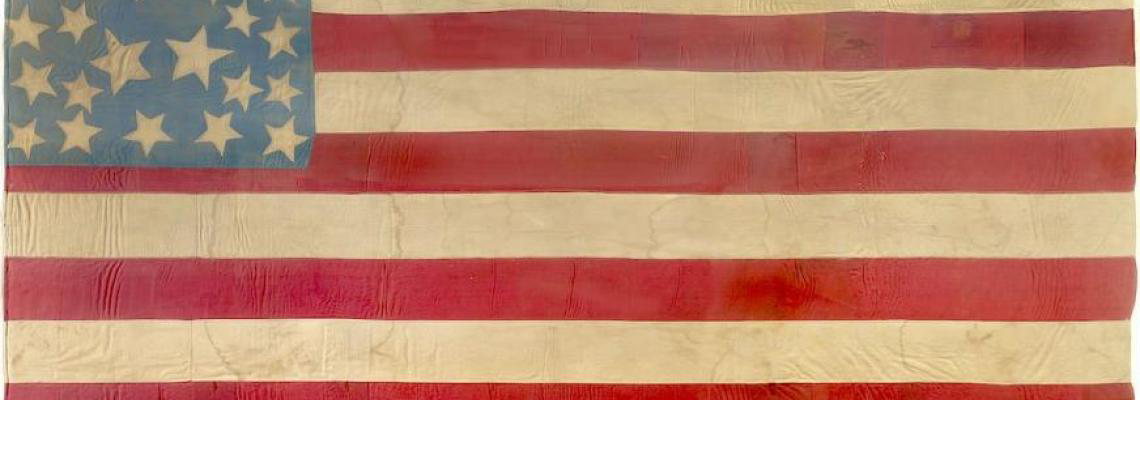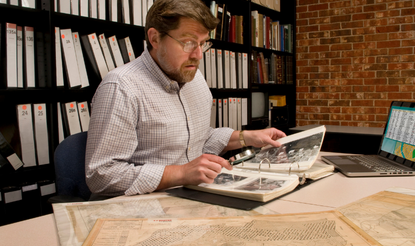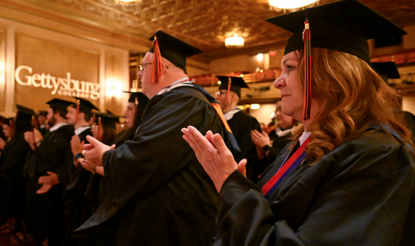A Place in History: Historical Perspective on Martin Luther King Jr. Day
by James Oliver Horton
In the late fall of 1983, the US Congress passed a bill declaring the third Monday of January each year as Martin Luther King Jr. Day. President Ronald Reagan signed the bill into law on November 2, 1983, fifteen years after King’s assassination. Passage of this bill had not been easy, as some conservatives and southern members of Congress had issued strong objections to it. During the debate in the Senate, Senator Jesse Helms, Republican from North Carolina, delivered a speech declaring that although there was no evidence that King was a member of the Communist Party, some suspected that he had ties to Communists and others on the radical left of America’s political spectrum. Others argued that there were already too many federal holidays, nine in all, and that, except for Washington’s Birthday, none honors a single individual. Some of the most fiscally conscious opponents argued that the cost of the holiday, as they calculated it, would be too high. In response to this argument Senator Bob Dole countered, "I suggest they hurry back to their pocket calculators and estimate the cost of 300 years of slavery followed by a century or more of economic, political, and social exclusion and discrimination."
Clearly, Martin Luther King and the Civil Rights Movement with which he was so closely identified remained extremely controversial in American politics and society, almost a generation after the passage of civil rights and voting rights legislation in 1964 and 1965. Even in the twenty-first century, some continue to have difficulty accepting King as an appropriate American to honor with a holiday. In Virginia, the state legislature adopted a novel approach, which continued until 2000, of combining the King holiday with existing observances of Robert E. Lee Day (January 19, celebrated since 1889) and Thomas J. "Stonewall" Jackson Day (January 21, celebrated since 1904). Lee-Jackson-King Day, as it was called, revealed a twisted reading of history that conflated honoring Confederate generals with honoring civil rights advocates, equating the southern Confederacy with the Civil Rights Movement. Some Virginians argued that both movements called upon Americans to stand up for their beliefs. One wonders at the logic of honoring all those willing to take strong principled stands without regard to the principles being advocated.
Although it may be true that King, Jackson, and Lee each had personal beliefs that they were willing to defend, King’s commitment to human freedom was more directly in keeping with the values and commitments set forth in the founding documents of the nation, those principles American founders offered in support of the Revolution. Although the institution of slavery existed in all thirteen of the original British North American colonies, the nation coming into being at the end of the eighteenth century identified itself with human freedom and a respect for the human rights that Thomas Jefferson and other Enlightenment devotees rhetorically championed. King spoke and acted in this tradition, using the language of freedom and equality and advocating these values, which are at the core of America’s founding rhetoric.
In his most well-known public speech, King described his dream, which as he said was deeply rooted in the American dream. This was more than the two-cars-in-every-garage dream of economic success to which the American dream is too often reduced. This was the dream of a bright and promising American future characterized by human freedom and a respect for human rights. As King reminded his audience at the March on Washington—some 250,000 people gathered on that hot August day in 1963 at the Lincoln Memorial in Washington, DC—this had been the original American dream of those who saw themselves as oppressed people in the grip of tyrants.
The March on Washington at which King delivered his speech was the largest political demonstration in US history that had occurred up to that point, an inspiring occasion. It was a day filled with lofty words from a range of speakers, from NAACP president Roy Wilkins and John Lewis of the Student Nonviolent Coordinating Committee (SNCC) to actor Charlton Heston representing a contingent of artists, including Harry Belafonte, Marlon Brando, Diahann Carroll, Ossie Davis, Sammy Davis Jr., Lena Horne, Paul Newman, and Sidney Poitier. Heston read a speech prepared by the African American writer James Baldwin, and John Lewis then reflected the sentiment of the day with his declaration that, "We cannot be patient, we do not want to be free gradually, we want our freedom, and we want it now." Yet no one’s words inspired and electrified the crowd, the entire nation, and much of the world, more than those of Martin Luther King.
As we think about that day and about King’s words when we celebrate Martin Luther King Day, it is fitting that we recall the historical context for the formation of the modern civil rights leadership. It is especially important for those too young to remember the man and his times to understand that King was not the first great advocate of American civil rights, but one in a long line of those who took the nation’s promise of liberty and equality of opportunity seriously enough to force the nation to reflect on its shortcomings and to demand that it live out its dreams. King would not have been completely comfortable with a day set aside in his honor. He was a man of great public humility, who realized that he was not the totality of the modern civil rights struggle but that he only symbolized the work that others were doing and had done over generations. He also understood that he was both a part and a product of a long history of human rights struggles, a history that, even now, few Americans appreciate.
One story that has become part of civil rights lore vividly illustrates this lack of understanding. During the early 1960s, hundreds of college students participated in the "jail, no bail" campaign to pack southern jails to overflowing, signaling that African Americans would not submit to racially discriminatory laws that denied them everything from a cup of coffee served on the basis of equality to the right to vote. The mother of one jailed protester attempted to post bond for her daughter’s release. The daughter, however, refused to accept bail, admonishing her mother that, "If your generation had done this, my generation would not have to." Despite its dramatic appeal, the daughter’s accusation was based on an ignorance of history. King and many others in the movement understood that they were following in the footsteps of their ancestors, white and black, those who in every generation since before national independence had struggled for freedom. Among African Americans and their progressive white allies, the dream of the 1960s was older than the nation.
The original American dream, set out in Thomas Jefferson’s essay that became the Declaration of Independence, made no direct mention of racial equality or of equality of opportunity unrestricted by race, for Jefferson and few of the national founders considered such a condition practical. During the 1770s and for the preceding generations of colonial life in British North America, human slavery had defined much of American race relations. Moreover, nearly half of those who signed the Declaration that brought the nation into being were themselves slaveholders whose personal fortunes rested on the uncompensated labor of bound Africans. Herein was forged the great American contradiction—a freedom-loving nation that tolerated human slavery. But for all its contradictions, the original American dream provided the foundation for a freedom struggle that began at the nation’s birth and continued beyond the life of Martin Luther King.
King’s call for America to make good on its commitment to human freedom and on the country’s belief in the existence of "inalienable" human rights given by God, rights protected by the US Constitution, drew upon centuries of tradition. Even before the nation had secured its liberty from Great Britain, African slaves had made a similar demand on those American patriots seeking national independence for themselves. In 1773 and 1774, Massachusetts slaves confronted colonial authorities with the question of freedom for America’s slaves. "We expect great things from men who have made such a noble stand against the designs of their fellow men to enslave them," they said. Other New England slaves issued similar petitions, highlighting the parallels between their cause and America’s desire to become a "free and Christian country."
It was with freedom and opportunity in mind that escaped slave Crispus Attucks led an interracial group of New England sailors and laborers to confront the British sentries at what became the Boston Massacre in 1770, an event that John Hancock called a noble stand for liberty. The desire for freedom also spurred African Americans to join with other colonial minutemen at Lexington, Concord, and Bunker Hill in 1775, standing against what Americans called British tyranny. These and others who served in the American forces during the Revolution were laying the groundwork for King’s dream, demanding through their actions and with their lives that America live out its ideals and make good on its promise. Americans, black and white, stood together in the pre-Revolutionary protest against British tax policy, the Stamp Act, and British impressment of Americans, black as well as white, into the Royal Navy. They fought in interracial military units of the Continental Army and the American Navy. When African American former slaves, freed by British proclamation, served with English forces, fighting alongside British, German, and Native American Indian troops, they did so in the name of freedom.
In the decades after American independence, whether as troops in the War of 1812, standing with Andrew Jackson at the Battle of New Orleans, or as prime movers in the abolitionist struggle against slavery, African Americans continued as leaders in the freedom movement. In all these efforts they found some white Americans, such as abolitionists William Lloyd Garrison and John Brown, willing to stand beside them, risking life and property in the name of America’s dream of liberty and human rights. On the battlefield of the Civil War and in the political struggles of the Reconstruction era and beyond, freedom fighters continued their work, even as the iron grip of Jim Crow segregation closed on that brief moment of progress brought by the constitutional abolition of slavery.
Growing up in segregated Atlanta during the 1930s and 1940s, Martin Luther King was well aware of the struggle. Born in 1929, he was too young to remember 1930, when robed and hooded members of the Ku Klux Klan marched through the heart of Sweet Auburn, the black residential and business area of the city, in an effort to intimidate any, even professional, blacks who might dare attempt to integrate other parts of Atlanta. Yet King learned much about the Civil Rights Movement from his father, who was minister of the Ebenezer Baptist Church and who during the 1930s had served as president of the city’s branch of the NAACP. Daddy King, as the senior King was called by his family and his congregation, was also a charter member of Atlanta’s Negro Voters League and an active community leader who developed educational programs for African American youth.
As a child of the movement with a family tradition of community activism, Martin Luther King Jr. clearly understood his place in the long freedom struggle. That the struggle continues even into the twenty-first century is not from lack of effort in earlier time, but because racial inequality is so embedded in American society. Ironically, this inequality is as traditional as is the nation’s commitment to human rights and human freedom. As King would see it, the overwhelming significance of Martin Luther King Day is that, beyond the shopping-mall sales and the public media events, it provides a time to reflect on the contradiction that he and those before him refused to allow America to ignore. King’s work and message should be viewed in the context of a long history stretching from eighteenth-century slaves to 1960s freedom riders to twenty-first-century community activists, all of whom refused to give up on the American dream and vowed to someday make it America’s reality.
James Oliver Horton is the Benjamin Banneker Professor Emeritus of American Studies and History at George Washington University and Historian Emeritus of the Smithsonian Institution’s National Museum of American History. His publications include Slavery and Public History: The Tough Stuff of American Memory (2006), Slavery and the Making of American History (2004), and In Hope of Liberty: Free Black Culture and Community in the North, 1700–1865 (1997), all co-authored with Lois E. Horton.
Suggested Sources
Books and Printed Materials
On Martin Luther King Jr.’s life and his career as a leader of the Civil Rights Movement in the 1950s and 1960s:
Abernathy, Donzaleigh. Partners to History: Martin Luther King, Jr., Ralph David Abernathy, and the Civil Rights Movement. New York: Crown Publishers, 2003.
Burns, Stewart. To the Mountaintop: Martin Luther King Jr.’s Sacred Mission to Save America, 1955–1968. New York: HarperSanFrancisco, 2004.
Frady, Marshall. Martin Luther King, Jr. New York: Penguin, 2002.
Garrow, David J. Bearing the Cross: Martin Luther King, Jr., and the Southern Christian Leadership Conference. New York: W. Morrow, 1986.
King, Martin Luther, Jr. The Papers of Martin Luther King, Jr. 6 vols to date (through March 1963). Clayborne Carson, senior ed. Berkeley: University of California Press, 1992— .
King, Martin Luther, Jr. The Autobiography of Martin Luther King, Jr. Clayborne Carson, ed. New York: Intellectual Properties Management, Inc. in association with Warner Books, 1998.
King, Martin Luther, Jr. A Call to Conscience: The Landmark Speeches of Dr. Martin Luther King, Jr. Clayborne Carson, ed. New York: Intellectual Properties Management in association with Warner Books, 2001.
Ling, Peter J. Martin Luther King, Jr. New York: Routledge, 2002.
Ralph, James. Northern Protest: Martin Luther King, Jr., Chicago, and the Civil Rights Movement. Cambridge, MA: Harvard University Press, 1993.
On the broader movement for equal rights for African Americans:
Branch, Taylor. Parting the Waters: America in the King Years, 1954–63. New York: Simon and Schuster, 1988.
Branch, Taylor. Pillar of Fire: America in the King Years, 1963–65. New York: Simon and Schuster, 1998.
Branch, Taylor. At Canaan’s Edge: America in the King Years, 1965–68. New York: Simon and Schuster, 2006.
Carson, Clayborne. In Struggle: SNCC and the Black Awakening of the 1960s. Cambridge, MA: Harvard University Press, 1981.
Jonas, Gilbert. Freedom’s Sword: The NAACP and the Struggle against Racism in America, 1909–1969. New York: Routledge, 2005.
Levy, Peter B. The Civil Rights Movement. Westport, CT: Greenwood Press, 1998.
Murray, Paul T. The Civil Rights Movement: References and Resources. New York: G.K. Hall, 1993.
Weisbrot, Robert. Freedom Bound: A History of America’s Civil Rights Movement. New York: Norton, 1990.
On Martin Luther King Jr.’s "I Have a Dream" speech and the 1963 March on Washington for Jobs and Freedom:
Barber, Lucy G. Marching on Washington: The Forging of an American Political Tradition. Berkeley: University of California Press, 2003.
Bass, Patrick Henry. Like a Mighty Stream: The March on Washington, August 28, 1963. Philadelphia: Running Press, 2002.
Garrow, David J. "King: The Man, the March, the Dream." American History 38, no.3 (2003): 26–35. [Background on and discussion of the motivation for the March on Washington.]
Hansen, Drew W. The Dream: Martin Luther King, Jr., and the Speech That Inspired a Nation. New York: Ecco, 2005.
On the process by which King’s birthday became a federal holiday and the ways in which it has been observed:
Garrow, David J. "The Helms Attack on King." Southern Exposure 12, no. 2 (1984): 12–15. [Jesse Helms’ role in the 1983 Senate debate on the King holiday.]
Lewis, Mary C. "Origins: How the Holiday Was Born." American Visions 1, no. 1 (1986): 44–49.
Shields, Thomas J. "The ‘Tip of the Iceberg’ in a Southern Suburban County: The Fight for a Martin Luther King, Jr., Holiday." Journal of Black Studies 33, no 4 (2003): 499–519. [Struggle of the local African American community and other leaders in Henrico County, Virginia, to force the school board to observe King’s birthday in public schools.]
Williams, Clarence G., ed. Reflections of the Dream, 1975–1994: Twenty Years Celebrating the Life of Dr. Martin Luther King, Jr. at the Massachusetts Institute of Technology. Cambridge, MA: MIT Press, 1995. [A compilation of speeches delivered at MIT over twenty years of annual observances of King‘s birthday.]
Internet Resources
The National Park Service’s Martin Luther King National Historic Site in Atlanta, which includes information on King‘s birthplace and childhood home and the Ebenezer Baptist Church Museum, has a comprehensive website with lesson plans on "Dr. Martin Luther King Jr.’s Legacy of Racial and Social Justice: A Curriculum for Empowerment" geared for grades kindergarten through eight and includes sections on the March on Washington (by the Alonzo Crim Center and George State University) and other resources:
http://www.nps.gov/malu/
http://www.nps.gov/malu/forteachers/lessonplansandteacherguides.htm
The Martin Luther King Papers Project at Stanford University has a website with a "Liberation Curriculum" section, which includes lesson plans based on King documents, and a "Teaching King" bibliography for grades nine through twelve.
http://mlk-kpp01.stanford.edu/index.php/lc/index
Of more specialized interest is a website with material on the Sweet Auburn neighborhood where King spent his childhood, from the National Park Service:
http://www.nps.gov/nr/travel/atlanta/aub.htm
The Eyes on the Prize series of the Public Broadcasting System (PBS) traces the history of the mid-twentieth-century US civil rights movement, 1954–1965 (which also has a print companion: Carson, Clayborne et al., eds. Eyes on the Prize Civil Rights Reader. New York: Viking, 1991):
http://www.pbs.org/wgbh/amex/eyesontheprize/
For Martin Luther King Jr.’s "I Have a Dream" speech and the 1963 March on Washington for Jobs and Freedom, PBS’s News Hour website has a segment on the March and its impact.
http://www.pbs.org/newshour/extra/teachers/lessonplans/history/dream2_8-20.html
The timeline provided by the Martin Luther King Center’s website gives a chronological framework for the fight for the recognition of Martin Luther King Day as a federal holiday and its celebration:
http://www.thekingcenter.org/KingHoliday/Chronology.aspx



